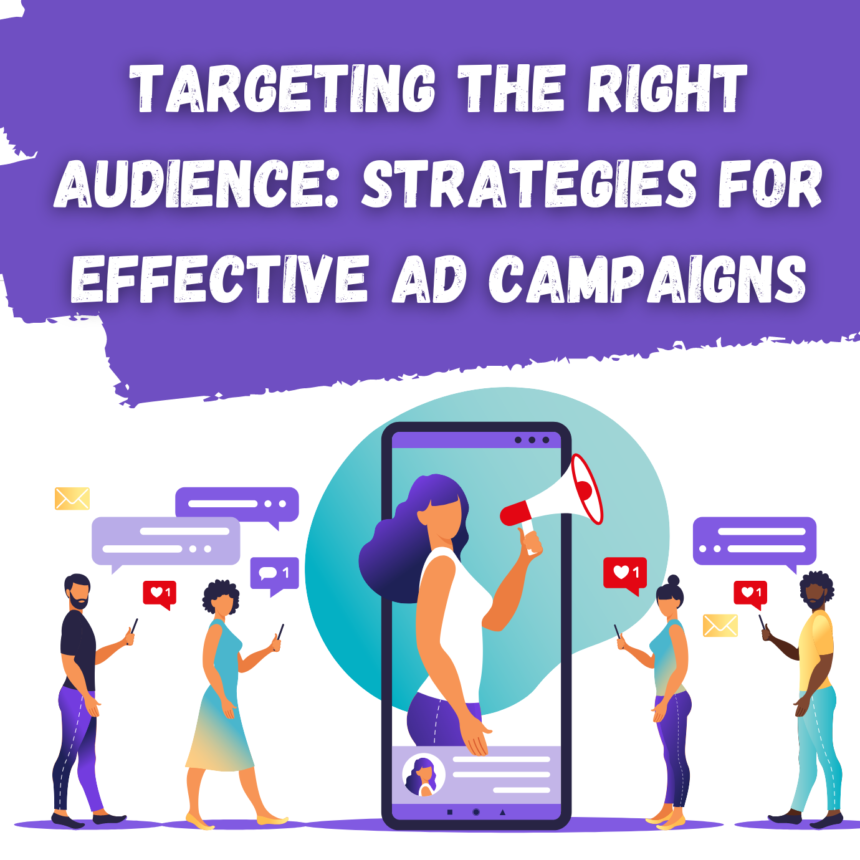Targeting the right audience is crucial for the success of ad campaigns. By reaching the people who are most likely to be interested in your products or services, you can maximize the effectiveness and ROI of your campaigns. Here are some strategies for effectively targeting the right audience:
1. Define Your Target Audience: Start by clearly defining your target audience based on demographics, interests, behaviors, and preferences. Consider factors such as age, gender, location, income level, education, occupation, lifestyle, and purchasing habits. The more specific and detailed your audience definition, the better you can tailor your ad campaigns.
2. Conduct Market Research: Conduct market research to gain insights into your target audience. Use surveys, interviews, and analytics tools to understand their needs, preferences, pain points, and motivations. This information will help you create more targeted and relevant ad campaigns.
3. Utilize Audience Segmentation: Divide your target audience into segments based on common characteristics or behaviors. This allows you to create more personalized and tailored campaigns for each segment. Segment your audience based on factors such as demographics, psychographics, past interactions with your brand, or purchasing history.
4. Use Data and Analytics: Leverage data and analytics to understand your audience better and track the performance of your campaigns. Use tools like Google Analytics, social media insights, and customer relationship management (CRM) systems to gain valuable insights into audience behavior, preferences, and engagement with your ads.
5. Employ Geographical Targeting: If your business operates in specific locations or targets customers in certain regions, use geographical targeting. This allows you to display your ads only to people in those locations. Geographical targeting can be particularly useful for businesses with physical stores or those offering location-specific services.
6. Behavior-based Targeting: Take advantage of behavior-based targeting options offered by ad platforms. These options allow you to reach people based on their online behaviors, such as search history, website visits, previous purchases, or engagement with similar content. This helps you target audiences who have shown interest or intent related to your offerings.
7. Interest-based Targeting: Many ad platforms provide interest-based targeting options. These options allow you to reach people based on their stated interests, hobbies, or preferences. By aligning your ads with the interests of your target audience, you can increase relevancy and engagement.
8. Lookalike Audiences: Use lookalike audience targeting to reach new audiences who share similarities with your existing customers or website visitors. Platforms like Facebook and Google Ads provide tools that analyze your existing data and identify audiences with similar characteristics, behaviors, or interests. This helps you expand your reach and target potential customers who are likely to be interested in your offerings.
9. Test and Refine: Continuously test and refine your targeting strategies. Experiment with different audience segments, ad placements, messaging, or creative elements to identify the most effective combinations. Analyze the performance of your campaigns and make data-driven optimizations to improve targeting accuracy and campaign outcomes.
10. Monitor and Adapt: Regularly monitor the performance of your ad campaigns and make adjustments as needed. Keep an eye on key metrics such as click-through rates, conversion rates, engagement, and ROI. If certain targeting strategies are not delivering desired results, adjust your approach or explore alternative targeting options.
By employing these strategies, you can effectively target the right audience and increase the chances of your ad campaigns resonating with the people who are most likely to become your customers. Targeted campaigns lead to higher engagement, better conversion rates, and ultimately, improved ad campaign performance.
